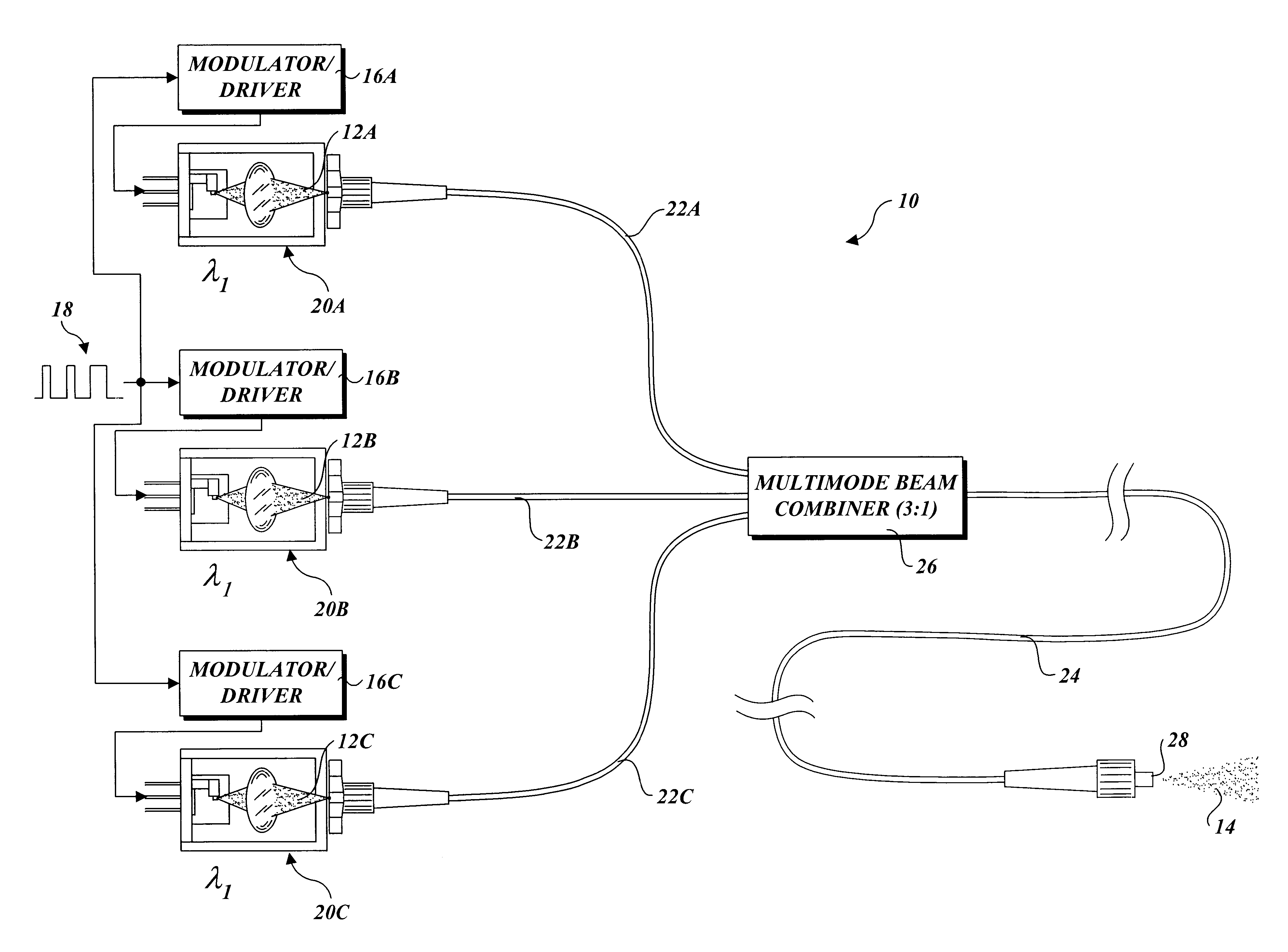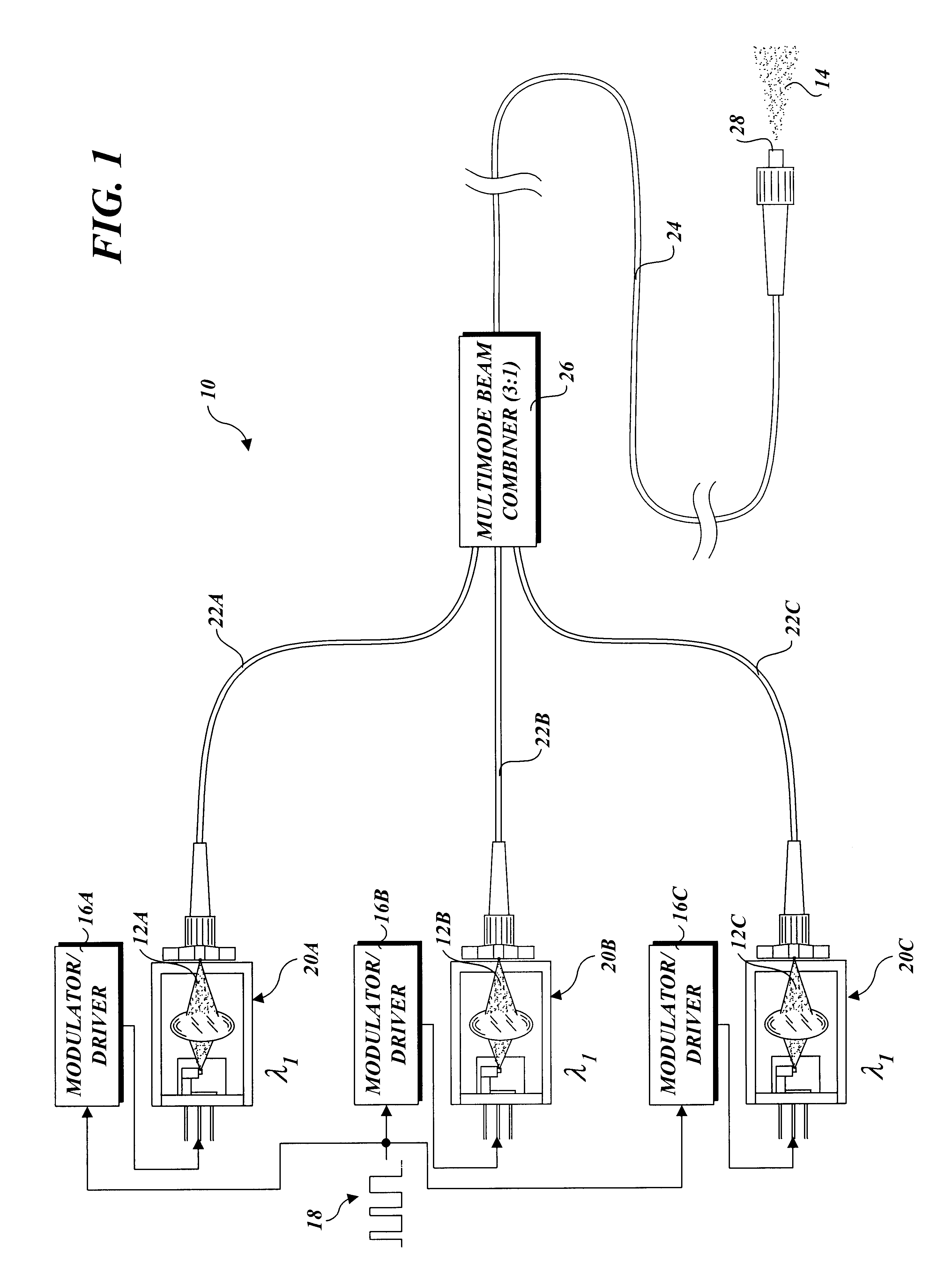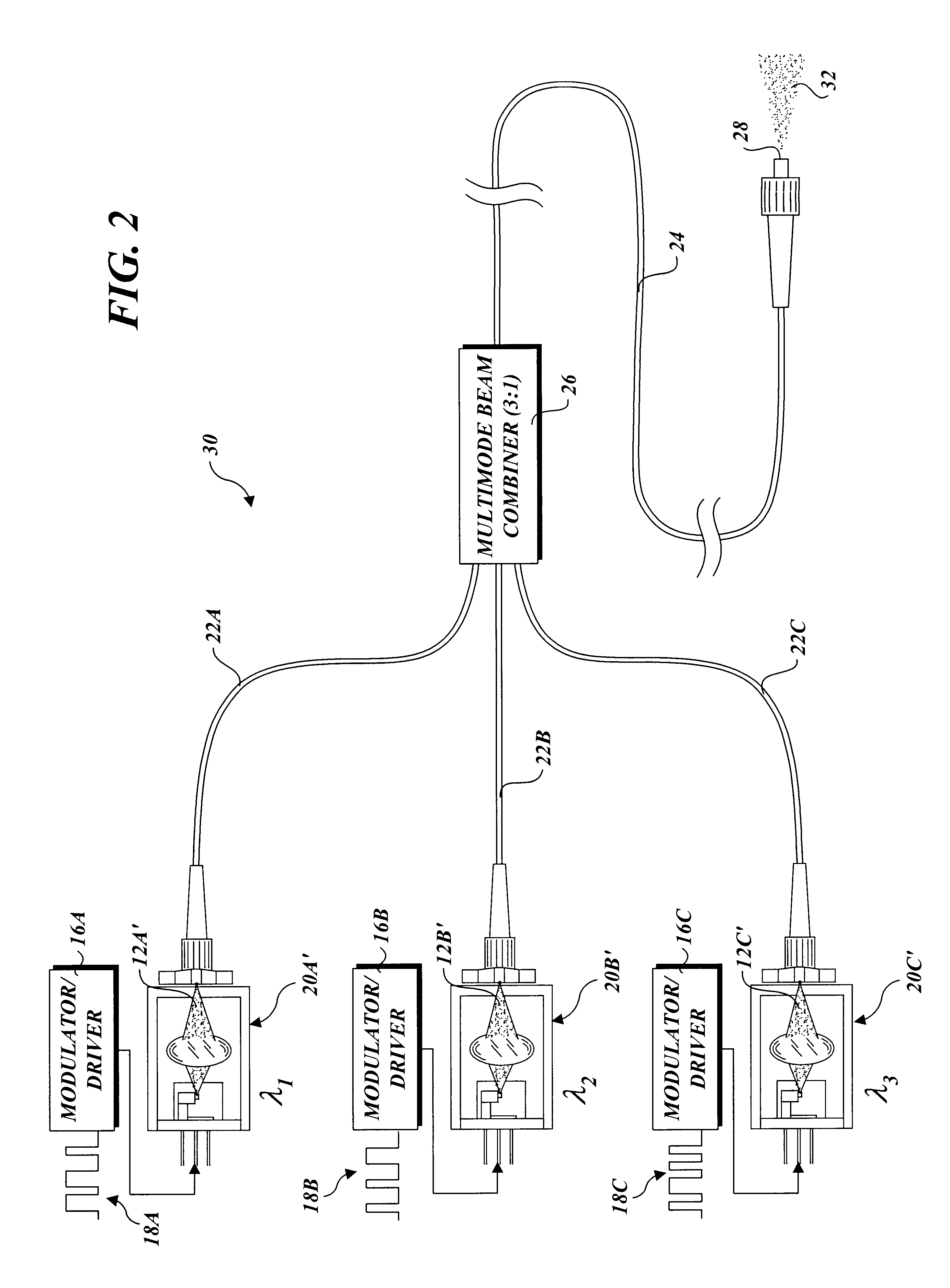Apparatus and method for combining multiple optical beams in a free-space optical communications system
a technology of optical communication system and apparatus, applied in the field of apparatus and method for combining multiple optical beams in a free-space optical communication system, can solve the problems of existing network infrastructure and technology reaching their limits, expensive approach, and expensive approach, and achieve the effect of increasing the power level of the optical signal
- Summary
- Abstract
- Description
- Claims
- Application Information
AI Technical Summary
Benefits of technology
Problems solved by technology
Method used
Image
Examples
embodiment 10
In accordance with one aspect of the invention, various configurations are disclosed herein that enable a plurality of redundant optical signals to be combined into a single signal and transmitted to a receiving terminal via an FSO link. For example, an embodiment 10 shown in FIG. 1 enables three optical signals 12A, 12B, and 12C corresponding to there redundant channels A, B, and C to be combined into a single mode-scrambled optical signal 14, which then may be transmitted using appropriate optics (not shown) to a receiving terminal (not shown) at the other end of an FSO link. Each channel A, B, and C includes a respective modulator / driver 16A, 16B, and 16C that receives a common input data stream 18 as an input and generates a corresponding modulate drive current that is used to drive a laser diode in a respective laser beam source 20A, 20B, and 20C. Optionally, a single multi-channel modulator / driver may be used in place of the individual modulator drivers. The laser beam sources...
an embodiment 30
An embodiment 30 that enables data pertaining to multiple independent data streams 18A, 18B, and 18C to be transmitted simultaneously via a wavelength division multiplexed (WDM) signal 32 is shown in FIG. 2. In this configuration, each of independent data streams 18A, 18B, and 18C is received by a respective modulator / driver 16A, 16B, and 16C. The modulator / drivers, in turn, provide modulated currents to drive respective laser diodes in laser sources 20A′, 20B′ and 20C′ to produce respective optical signals 12A′, 12B′, and 12C′. Each of optical signals 12A′, 12B′, and 12C′ has a separate wavelength, as depicted by wavelengths λ1, λ2, and λ3.
By using multiple modulated signals having respective wavelengths, the bandwidths of each of the individual signals can be aggregated, thereby increasing the bandwidth of an FSO link. Generally, the wavelength spacing should meet that prescribed for Course Wavelength Division Multiplexing (CWDM), i.e., near 1550 nanometers (nm) with a nominal 20 ...
an embodiment 10 ′
An embodiment 10′, which is a variant of embodiment 10, is shown in FIG. 3. In this embodiment, a portion of output fiber segment 24 is configured in a series of alternating loops 34. It is noted that the final segment of multimode fiber may be configured in a similar series of alternating loops for each of the embodiments discussed herein, and that FIG. 3 is merely representative of a particular implementation corresponding to embodiment 10. Experimental results have shown that the use of such alternating loops improves the mode scrambling of a mode-scrambled optical signal in which the outer portions of the numerical apertures of the signal are more filled.
Details of alternating loops 34 in accordance with one embodiment are shown in FIG. 4. In this embodiment, the alternating loops may be formed by wrapping a portion of output fiber segment 24 around a plurality of rods 38 in an alternating manner. In general, the radius R of the loops should be large enough to not cause damage t...
PUM
 Login to View More
Login to View More Abstract
Description
Claims
Application Information
 Login to View More
Login to View More - R&D
- Intellectual Property
- Life Sciences
- Materials
- Tech Scout
- Unparalleled Data Quality
- Higher Quality Content
- 60% Fewer Hallucinations
Browse by: Latest US Patents, China's latest patents, Technical Efficacy Thesaurus, Application Domain, Technology Topic, Popular Technical Reports.
© 2025 PatSnap. All rights reserved.Legal|Privacy policy|Modern Slavery Act Transparency Statement|Sitemap|About US| Contact US: help@patsnap.com



